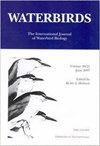Trials and Lessons Learnt in Three Seasons of Attempting to Study the Movements of Saddle-Billed Storks in Zambia
IF 0.6
4区 生物学
Q3 ORNITHOLOGY
引用次数: 1
Abstract
Abstract. We initiated a telemetry study on the Saddle-billed Stork (Ephippiorhynchus senegalensis) in western Zambia in 2019 to address knowledge gaps about spatial ecology. As the first such field study on the species, we encountered multiple challenges in attempting to capture free-ranging storks, including limitations in manpower and trapping techniques. In three field trips, we captured and deployed transmitters on only three storks. All transmitters have since failed, and the longest one transmitted data was for only five months, during which we recorded a dispersal event into Angola and back to its natal area. Our work has painstakingly demonstrated that field techniques are not always transferable between species and study systems, and that initiating work on an unstudied species has unforeseen difficulties.赞比亚鞍嘴鹳三季运动研究的试验与教训
摘要2019年,我们对赞比亚西部的鞍嘴鹳(Ephippiorhynchus senegalensis)进行了遥测研究,以解决空间生态学方面的知识空白。作为第一次对该物种进行实地研究,我们在试图捕捉自由放养的鹳时遇到了多重挑战,包括人力和诱捕技术的限制。在三次实地考察中,我们只在三只鹳身上捕获并安装了发射机。此后,所有的发射机都失灵了,最长的发射机只传输了5个月的数据,在此期间,我们记录了一个分散到安哥拉并返回其出生地区的事件。我们的工作已经煞费苦心地证明了实地技术并不总是在物种和研究系统之间转移,并且在未研究的物种上启动工作具有不可预见的困难。
本文章由计算机程序翻译,如有差异,请以英文原文为准。
求助全文
约1分钟内获得全文
求助全文
来源期刊

Waterbirds
生物-鸟类学
CiteScore
1.30
自引率
0.00%
发文量
0
审稿时长
6-12 weeks
期刊介绍:
Waterbirds is an international scientific journal of the Waterbird Society. The journal is published four times a year (March, June, September and December) and specializes in the biology, abundance, ecology, management and conservation of all waterbird species living in marine, estuarine and freshwater habitats. Waterbirds welcomes submission of scientific articles and notes containing the results of original studies worldwide, unsolicited critical commentary and reviews of appropriate topics.
 求助内容:
求助内容: 应助结果提醒方式:
应助结果提醒方式:


